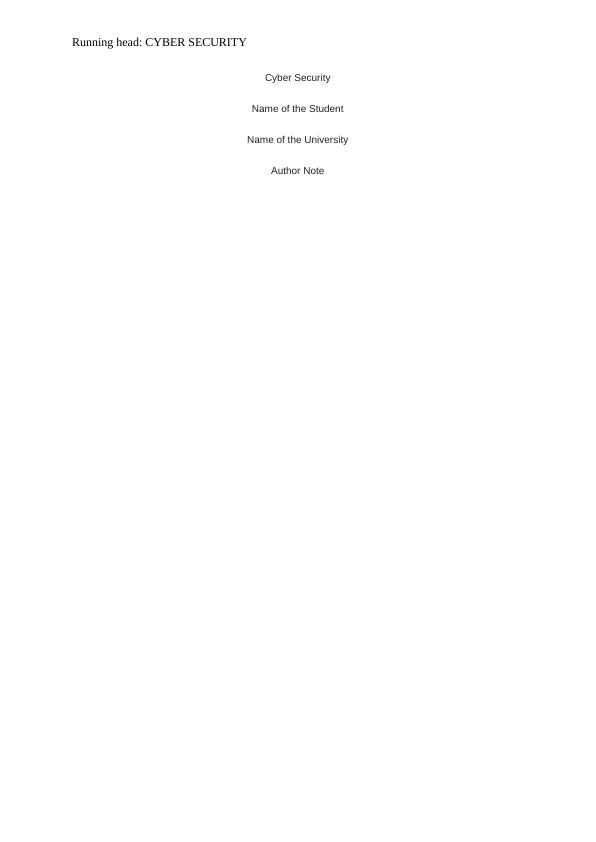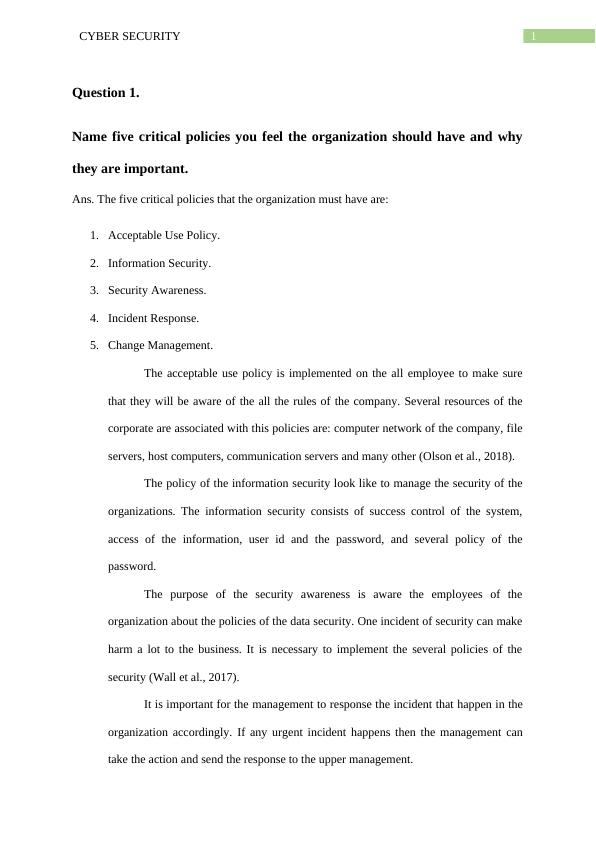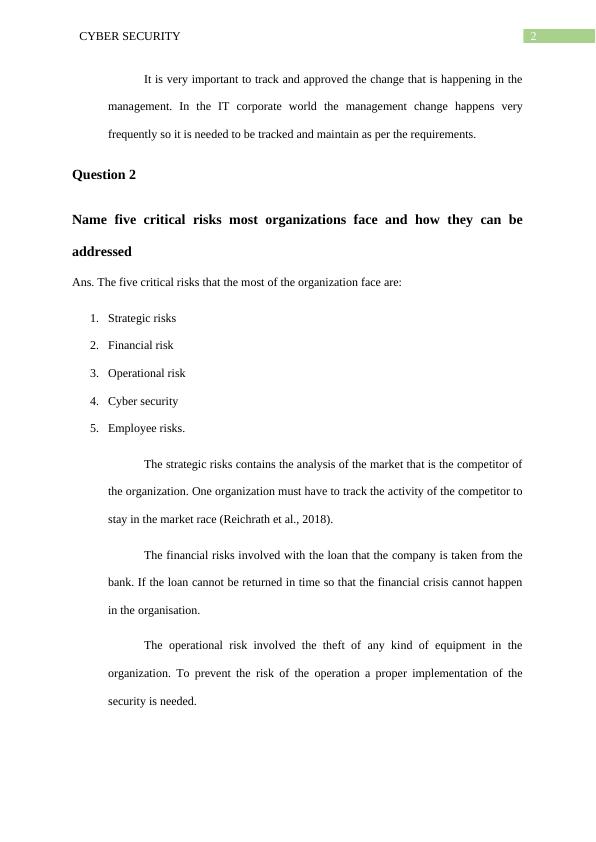Cyber Security: Critical Policies, Risks, Framework and Implementation
6 Pages1203 Words72 Views
Added on 2023-06-10
About This Document
This article discusses the five critical policies and risks that organizations face in cyber security. It also recommends the NIST 800 37 framework for risk management and highlights the time, resources, and technology required for implementation.
Cyber Security: Critical Policies, Risks, Framework and Implementation
Added on 2023-06-10
ShareRelated Documents
End of preview
Want to access all the pages? Upload your documents or become a member.
Cyber Security: BYOD Risk Assessment, Certificate-based Authentication, and Anti-phishing Guideline
|9
|2240
|285
Develop and Implement Policy: A Case Study of Widget Enterprises
|11
|1683
|323
Security Plan And Security Management
|11
|1883
|12
Cybersecurity Training
|4
|790
|406
Information Security System: Analysis of Incidents and Management Measures
|13
|2018
|472
Importance of Cyber Security Framework and its Components
|5
|1114
|370



